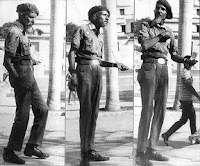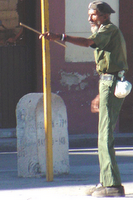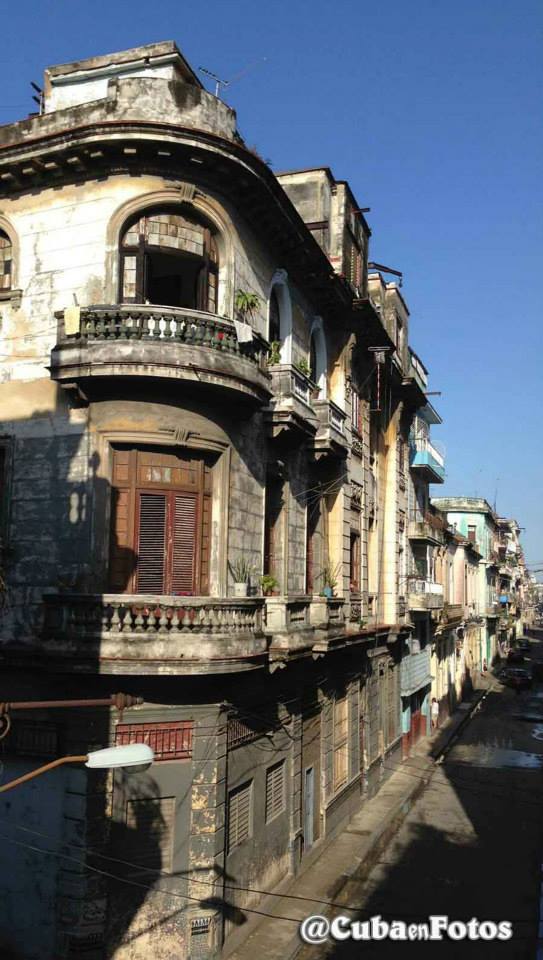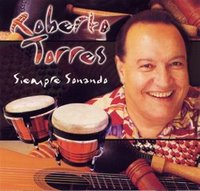By Esteban Fernández
After the last voyage of the ship MV Venus, after 49 days have been held at the base De las Calderas in Santo Domingo, after the disintegration of JURE, returned to Puerto Rico.

The veterans guajiros patriots of the Escambray, Vicente Mendez, Edel Montiel, and their followers, came with us to the pier, but is mounted on a small boat and landed in advance at a place called Cataño.
Then, the crew of the boat was going to Miami slowly. The question was, who a month I was completely alone in the vessel 110 feet in length.
I was lucky that a Cuban named Estanislao old man (who was the master of the ship) approached the “Venus” daily in a small boat bringing me food and cooking it. I talked for a while, talked of Cuba, and I was boasting of a Puerto Rican girl who gave him stay at home. And would not return until the next day.
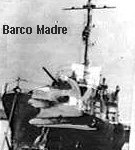
I did not have a penny, and walked with two changes of clothes washed by hand one day and one day if not. As you can imagine, in Venus did not have to pay rent, I told the old man gave me food, and a young woman named Carmen Rivera, who met a priori in Bayamon, visited me. So I was not entirely hopeless.
I had hoped that the leaders of JURE, Manolo Ray Rivero or Rogelio Cisneros, arrived and sent me to another place. The only thing that bothered me was not knowing the whereabouts of Alberto Muñoz Riopedre, one that would land in Cuba, and who had become my best friend. I thought: “If Albertico knew my situation, I took out of here.”
Suddenly one morning and noticed a man appears three things: one, that looked like a serious man, the other was bald, and finally he was Cuban. And do not think that the third inspired me very quietly, because we were at war against Castro, and Castro are also mostly Cubans.
He also had me complete confidence. I said aggressively: “Boy are you who you are, you’re doing here?”. I said, smiling at me (or something like a smile): “That was going to ask the same to you” …
He said: “My name is” Bebo Acosta “and I come to take care of this boat.” More relieved then said, “I am Esteban (without giving my name) and I’m the telegrapher this boat” … (READ AT THE END A BRIEF BIOGRAPHY OF ORLANDO ‘BEBO’ ACOSTA)
He replied: “I’ll get a phone in San Juan, really find out who you are and come back over here. If not for you my presence here, get lost before I return. ” And since I had nothing to hide, no place to go, I stayed there until “Bebo” returned smiling and shook my hand …
I said, “Boy, you’re crazy? The remaining of the Board have no idea where you’ve been gone. What are you here yet? “… I replied: “I have not got money to go to Puerto Rico, also did not want to leave completely abandoned Venus” … He laughed and said, “To you I have a screw loose, seems to have no 20 years. Neither worry that you’re going with me to Florida “… I sighed deeply.

We got on a plane and left. Bebo’s wife greeted us at the airport. I just brought a piece of paper with the phone number of a stranger to me, call Diana Ayala, Humberto Solis gave me saying, “I’m going, but just in case one day you get to Miami alone, resorted to a person who is charitable and good, and will always know my whereabouts “…
It seemed to me that my dress was so precarious, besides the presentation he made to his wife, who immediately both contributed to show some kind of pity about me.
“Bebo” I asked, “Where you want me to take you ?” and I replied: “To the house of Carlos Zarraga, there are the peasants of the Escambray and I can enroll in the next landing in Cuba.” Then the two looked sadly (did not have to agree) and told me: “No , boy, come with us, you can stay a while in our home. ” But I chose to go with the future martyr Vicente Mendez. To get where I asked them to take me, we close with a tight embrace, both “Bebo” as his wife, I got together.
And to round off let me say that Orlando “Bebo” Acosta was one of the fiercest fighters in the Cuban cause. He was a hero of M.R.R. and war for the freedom of Cuba. It was great confidant of Rogelio Gonzalez Corzo, the famous martyr “Francisco”. The anti-Castro history can not be written ignoring Orlando Acosta.
On it said my friend Waldo Castroverde: “Bebo” became the mentor of a generation of young Cubans eager to be helpful in the fight for the freedom of our country. A “Bebo” were attending, to ask for advice, wondering where and how we could participate in actions against the Castro regime, because we knew that if there was any attempt or project to bring the war to Cuba, there was “Bebo”, helping, cooperating with total disinterest, without trying to win glory or fame “…

“Bebo” died years ago and “Venus” was in the hands of the Commander “Nino” Diaz. After several failures Joaquin and Mercedes Bin war took up a collection and brought me to California. My daughters, who inherited my sense of humor, I say all the time: “Daddy, if it had not been for Mr. Acosta still you would live on Venus.” And I reply: “And you were half boricua” …
Sources: EstebanFernandez/InternetPhotos/TheCubanHistory.com
Padazos de Historia: en el Venus/he Cuban History/ Arnoldo Varona, Editor
GO BACK HOME
ORLANDO ‘BEBO’ ACOSTA, brief biography
“Bebo” Acosta as all his friends called him, was a Cuban who came from the ranks of the Cuban Authentic Party, from early ‘Bebo’ understood the turn totalitarian Marxist strongman and the Castro regime, joining the anti-Castro organization MRR . Their bravery demonstrated it many times in and out of Cuba. Was “Bebo” Acosta who receive among other members of the Cuban Student Directorate Alberto Muller, Manuel Salvat, Armengol Miquelon Garcia, who returned from exile to the island slave to activate the underground struggle against the Castro tyranny.
To go into exile, was “Bebo” Acosta’s trusted and close friend of the Engineer Rogelio Gonzalez Corzo, “Francisco” underground main leader of MRR. Orlando Acosta is his most trusted “Francisco” and who sent his last letter, one day before he was captured and was later shot, along with other patriots, as Humberto Sori Marin and Eufemio Fernandez.
After the failure of the Bay of Pigs invasion and dismemberment of the underground, “Bebo” continued in exile in a tireless effort to try to bring the war to Cuba, despite harassment and persecution carried out by the U.S. authorities , the same as initially encouraged and cooperated with attempting to overthrow the Cuban tyranny.
Over time, “Bebo” became the mentor of a generation of young Cubans, eager to be helpful in the fight for the freedom of Cuba.
If there was any attempt or project about bringing liberty to Cuba, there was “Bebo”, helping, cooperating with complete disinterest, without trying to gain glory or fame. His first passion, one that took up most of his time, until the last moments of his life, was the cause of freedom in Cuba.
Orlando Acosta “Bebo” died in Miami.

EL ULTIMO EN EL VENUS: PEDAZOS DE HISTORIA
Por Esteban Fernández
Después del último viaje de la motonave Venus, después de haber estado 49 días detenidos en la Base de las Calderas en Santo Domingo, después de la desintegración del JURE, regresamos a Puerto Rico.

Los guajiros ex combatientes del Escambray, Vicente Méndez, Edel Montiel, y sus seguidores, no llegaron con nosotros al muelle, sino que se montaron en una pequeña embarcación y desembarcaron de antemano en un lugar llamado Cataño.
Acto seguido, la tripulación del barco se fue yendo para Miami poco a poco. La cuestión fue, que al mes yo estaba completamente solo en aquel navío de 110 pies de eslora.
Tuve la suerte que un ancianito cubano llamado Estanislao (que había sido el contramaestre del barco ) se acercaba al “Venus” diariamente en un botecito y me traía alimentos y los cocinaba. Me hablaba por un rato, conversábamos de Cuba, y me hacía alardes de una muchacha puertorriqueña que le daba alojo en su casa. Se iba y no regresaba hasta el próximo día.

No tenía ni un solo centavo, y andaba con dos mudas de ropa que lavaba a mano un día si y un día no. Como ustedes se imaginarán, en el Venus no tenía que pagar renta, ya les dije que el viejito me daba comida, y una joven llamada Carmen Rivera, que conocí a priori en Bayamón, me visitaba. Así es que desesperado del todo no estaba.
Yo tenía la esperanza que los líderes del JURE, Manolo Ray Rivero o Rogelio Cisneros, llegaran y me enviaran para otro lugar. Lo único que me molestaba era no conocer el paradero de Alberto Muñoz Riopedre, uno de los que iban a desembarcar en Cuba, y que se había hecho mi mejor amigo. Pensaba: “Si Albertico supiera mi situación, me sacaba de aquí.”
De pronto, una mañana se aparece un hombre y noté tres cosas: una, que tenía cara de hombre serio, la otra que era calvo, y por último que era cubano. Y no crean que la tercera me inspiró mucha tranquilidad, porque estábamos en guerra contra el castrismo, y los castristas en su mayoría también son cubanos.
Él tampoco me tenía entera confianza. Me dijo en forma agresiva: “Muchacho ¿y tú quién eres, que haces aquí?”. Yo le contesté sonriéndome ( o algo parecido a una sonrisa): “Eso mismo le iba a preguntar a usted”…
Me dijo: “Mi nombre es “Bebo Acosta” y vengo a hacerme cargo de esta embarcación”. Entonces más aliviado le dije: “Soy Esteban (sin darle mi apellido) y soy el telegrafista de este barco”… (VER AL FINAL BREVE BIOGRAFIA DE ORLANDO ‘BEBO’ ACOSTA).
Me contestó: “Voy a buscar un teléfono en San Juan, averiguo de verdad quién eres tú y vuelvo para acá. Si no te conviene mi presencia aquí, piérdete antes de que yo regrese”. Y como no tenía nada que ocultar, ni lugar a donde ir, me quedé allí hasta que “Bebo” regresó sonriente y me estrechó la mano…
Me dijo: “¿Muchacho, tu estás loco? Los que quedan de la Junta no tienen ni la menor idea en donde tu has estado metido. ¿Qué haces tú aquí todavía?”… Le respondí: “Es que no tengo dinero para poder irme de Puerto Rico; además, no quería dejar el Venus completamente abandonado”… Soltó una carcajada y me dijo: “A ti te falta un tornillo, parece que no tienes ni 20 años. Ni te preocupes que te vas conmigo para Florida”… Suspiré hondo.

Nos montamos en un avión y nos fuimos. La esposa de Bebo nos recibió en el aeropuerto. Yo sólo traía un papelito con el número de teléfonos de una desconocida para mí, llamada Diana Ayala, que Humberto Solís me había dado diciéndome: “Me voy, pero por si acaso algún día llegas a Miami solo, recurre a ella que es una persona caritativa y buena, y siempre va a saber mi paradero”…
A mí me pareció que mi indumentaria era tan precaria, además de la presentación que me hizo Bebo a su esposa, que ambas cosas inmediatamente contribuyeron a que la señora me cogiera tremenda lástima.
“Bebo” me preguntó: “¿Para dónde te llevo?” y le respondí: “Para la casa de Carlos Zárraga, allá están los guajiros del Escambray y puedo incorporarme al próximo desembarco en Cuba”. Entonces los dos se miraron con tristeza (no tuvieron necesidad de ponerse de acuerdo) y me dijeron: “No, chico, ven con nosotros, te puedes quedar un tiempo en nuestro hogar”. Pero yo escogí irme con el futuro mártir Vicente Méndez. Al llegar a donde les pedí que me llevaran, nos despedimos con un apretado abrazo, que tanto “Bebo” como su esposa, me dieron al unísono.
Y como colofón les diré que Orlando “Bebo” Acosta fue uno de los más aguerridos combatientes en la causa cubana. Fue un héroe del M.R.R. y de la guerra por la libertad de Cuba. Fue hombre de confianza del gran Rogelio González Corzo, el famoso mártir “Francisco”. La historia del anticastrismo no se puede escribir ignorando a Orlando Acosta.
Sobre él manifestó mi amigo Waldito Castroverde: “Bebo” se convirtió en el mentor de toda una generación de jóvenes cubanos, ansiosos de ser útil en la lucha por la libertad de nuestra Patria. A “Bebo” acudíamos, a pedir consejos, preguntando dónde y cómo podíamos participar en acciones en contra del Castrismo, porque sabíamos, que si había algún intento o proyecto para llevar la guerra a Cuba, allí estaba “Bebo”, ayudando, cooperando con total desinterés, sin pretender ganar gloria o fama”…

“Bebo” falleció hace años y “El Venus” quedó en manos del Comandante “Nino” Díaz. Después de varios fracasos bélicos Joaquín y Mercedes Bin hicieron una colecta y me trajeron para California. Mis hijas, que heredaron mi sentido del humor, me dicen a cada rato: “Papi, si no hubiera sido por el señor Acosta todavía tu vivirías en el Venus”. Y yo les respondo: “Y ustedes fueran mitad boricua”…
Sources: EstebanFernandez/InternetPhotos/TheCubanHistory.com
Padazos de Historia: en el Venus/he Cuban History/ Arnoldo Varona, Editor
GO BACK HOME
ORLANDO ‘BEBO’ ACOSTA, BREVE BIOGRAFIA
“Bebo” Acosta como todos sus amigos le llamaban, era un cubano que procedia de las filas del Partido Autentico de Cuba, desde temprano ‘Bebo’ comprendió el cariz totalitario, caudillista y Marxista del régimen Castrista, incorporándose a la organización anti-castrista MRR. Su valentía la demostró muchas veces dentro y fuera de Cuba. Fué “Bebo” Acosta quien recibiría entre otros a los miembros del Directorio Estudiantil cubano Alberto Muller, Manuel Salvat, Miguelón García Armengol, quienes regresaban del Exilio a la Isla esclava para activar la lucha clandestina en contra de la tiranía castrista.
Al salir al Exilio, fue “Bebo” Acosta el hombre de confianza y amigo entrañable del Ingeniero Rogelio González Corzo, “Francisco” dirigente principal de la clandestinidad del MRR. Orlando Acosta es en quien más confía “Francisco” y a quien le envía su ultima carta, un día antes de ser capturado, siendo posteriormente fusilado, junto a otros patriotas, como Humberto Sori Marín y Eufemio Fernández.
Después del fracaso de la invasión de Bahia de Cochinos y el desmembramiento del movimiento clandestino, “Bebo” continuó en el exilio en un esfuerzo incansable por tratar de llevar la guerra a Cuba, a pesar del hostigamiento y persecución llevada a cabo por las autoridades norteamericanas, las mismas que inicialmente alentaban y cooperaban con los cubanos que intentaban derrocar la tiranía.
Con el tiempo, “Bebo” se convirtió en el mentor de toda una generación de jóvenes cubanos, ansioso de ser útil en la lucha por la libertad de Cuba.
Si había algún intento o proyecto para llevar la querra a Cuba, allí estaba “Bebo”, ayudando, cooperando con total desinterés, sin pretender ganar gloria o fama. Su pasión primordial, aquella que ocupába la mayor parte de su tiempo, lo fue hasta los últimos momentos de su vida, la causa de la libertad de Cuba.
Orlando Acosta “Bebo” falleció en Miami.



